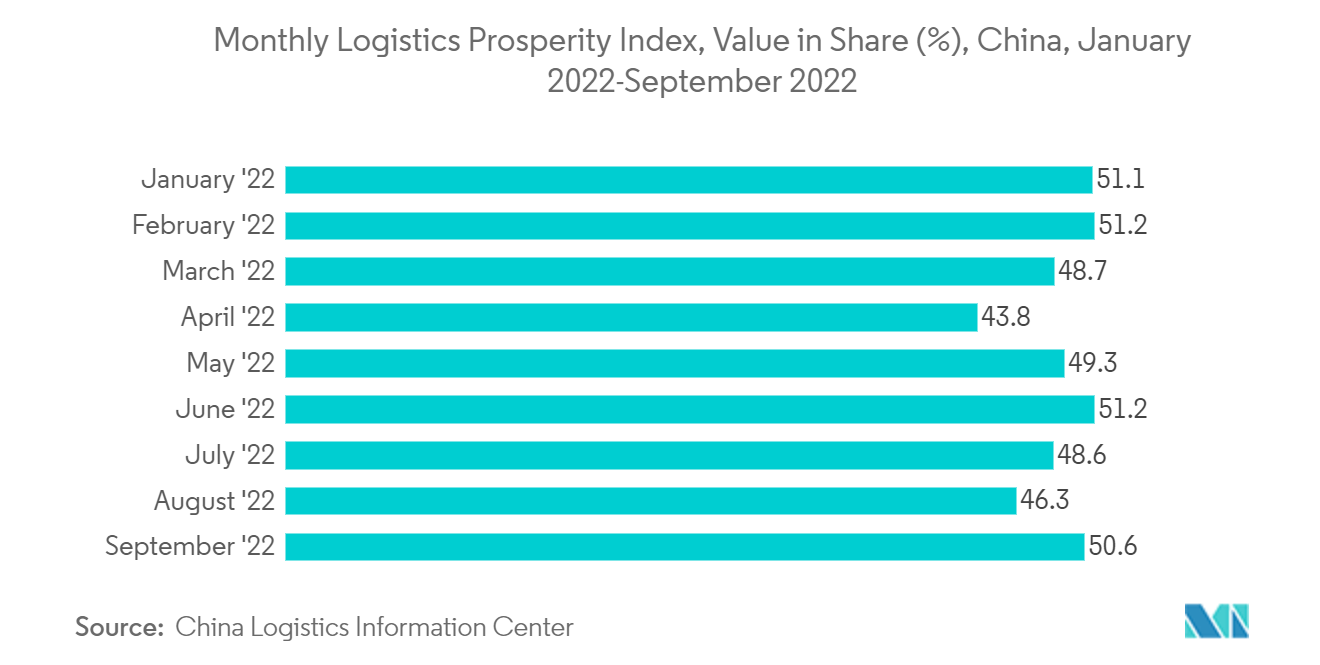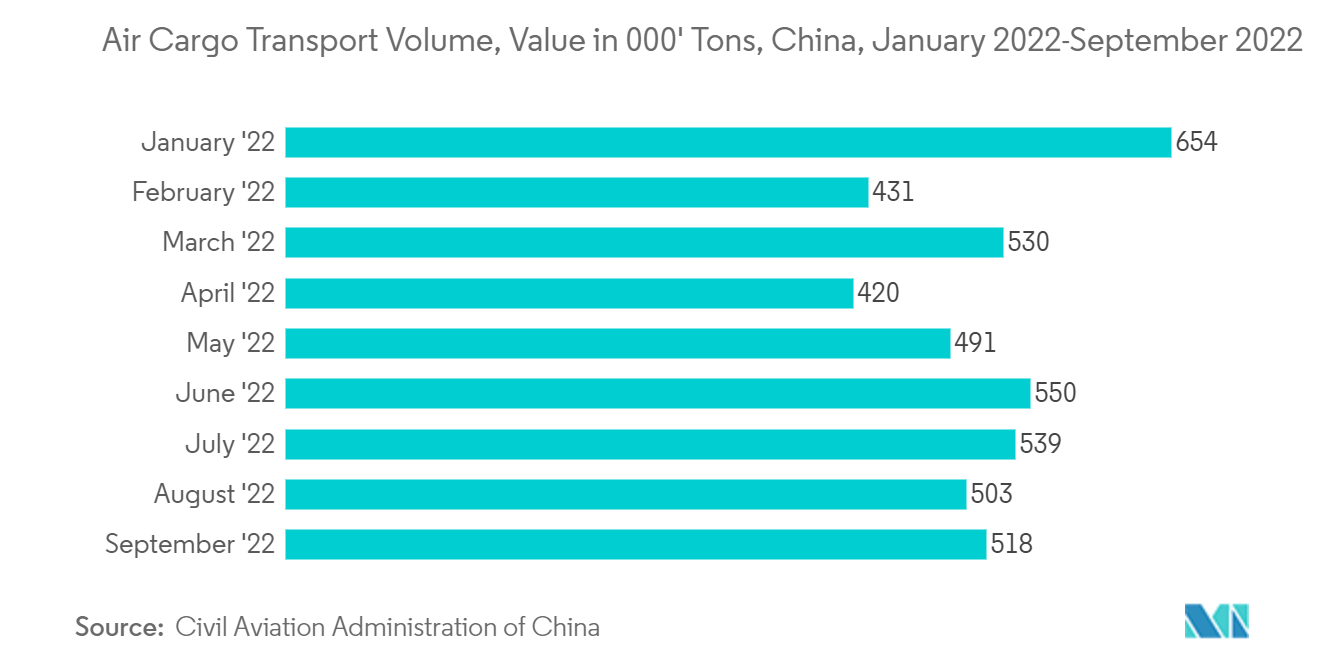Market Trends of China Digital Freight Forwarding Industry
This section covers the major market trends shaping the China Digital Freight Forwarding Market according to our research experts:
Rise in E-Commerce Sector Driving the Market
China currently owns one of the world's strongest e-commerce sectors. In 2021, despite the pandemic disruption, retail e-commerce sales in the country amounted to more than USD 2.7 trillion, and it is expected to reach approximately USD 3.5 trillion by 2024. In addition, as per industry experts, the country holds more than 40% of the global market share in e-commerce sales and handles more e-commerce transactions than France, German, Japan, and the United Kingdom.
Moreover, in September 2022, as per the China Federation of Logistics and Purchasing (CFLP), the country's e-commerce logistics index increased to 108.1 at a growth rate of 50%, which is higher than the threshold line. This rebound can be attributed to the steady recovery of household consumption, rapid growth in energy and logistics, and restoration of the logistics supply capacity in the country. Moreover, in Q4 2022, domestic e-commerce platforms and freight forwarders improved their infrastructure to enhance delivery quality and efficiency.
In addition, industry experts projected growth in e-commerce sales, majorly driven by the Double 11 shopping festival in the country. Most of the e-commerce platforms started presales for this event. October 2022, presales on JD Worldwide, JD's import business platform, experienced a growth rate of more than 170% compared to the same period in the previous year. However, with the growing sales, online customers expect order accuracy, same-day or same-hour delivery, and free returns. In addition, e-commerce companies are exploring ways to reduce order delivery times and operational costs. The e-commerce industry drives the demand for transparency, affordability, convenience, speed in delivery, and compelling frictionless returns. In order to cater to these increasing e-commerce sales, most freight forwarders are moving toward digitization of their services to maintain transparency.

Increasing Air Cargo Shipments Expected to Drive the Market
Chinese air cargo witnessed an upward trend. For instance, in 2022, Shanghai Pudong International Airport's inbound and outbound cargo flights reached more than 17,800 in Q3 2022, at a growth rate of nearly 34% compared to Q2 2022 and increased by 6.6% when compared to the same period of the previous year. In addition, from Q1 to Q2 of 2022, Hangzhou Xiaoshan International Airport completed an air cargo throughput of 478,000 tons, including 78,300 tons of air cargo in the international segment (Hong Kong, Macao, and Taiwan).
Moreover, as per the China Academy of Civil Aviation Science and Technology, in early 2022, the air cargo volume slightly declined when compared to the pre-pandemic levels. After April 2022, the volume showed an increasing trend. In addition, growth in e-commerce has driven air cargo shipments in the country. International trade in China has also created a strong demand for air cargo, fueling the digital freight forwarding industry in the country.
Meanwhile, according to customs data, China's cross-border e-commerce import and export scale has increased nearly 10 times in the past five years. In addition, the outbreak of the pandemic fueled cross-border e-commerce in the country, further boosting air cargo demand. However, as per the Civil Aviation Administration of China, in September 2022, air cargo shipment volume amounted to more than 510,000 tons. Thus, the increasing air freight volume will drive digitalization adoption in the logistics sector.


